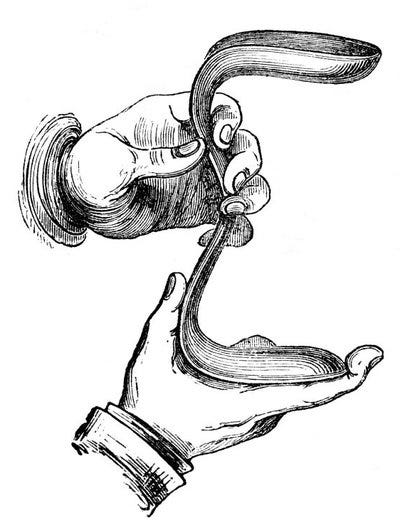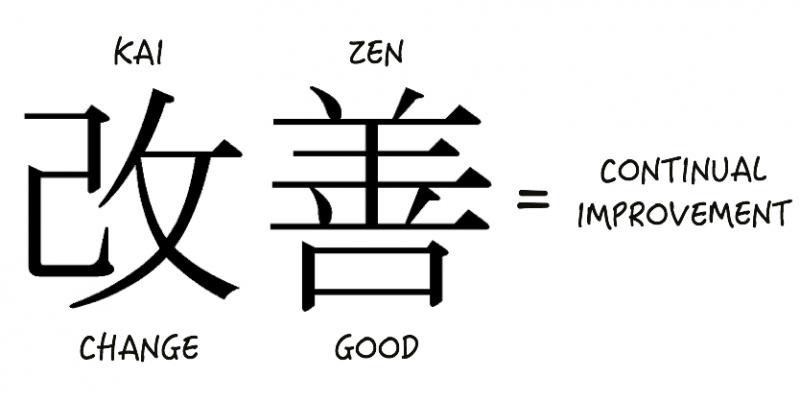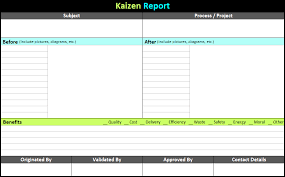The Color of the Year should actually be Sulking Room Pink.
As a marketing leader at both PANTONE and Farrow & Ball, I have lots of thoughts on color + “of the year” // Why America needs a problem solving workshop led by powerhouse women to sort this shit out
I haven’t felt very creative since early November. I’ve gone through the cycle of emotions, including confronting that I knew all along things would turn out this way. And I’ve buried my head in the sand for a few weeks, and have some thoughts.
Maybe we tried to do too much?
And, if I’m being really reflective and critical, maybe we are doing this to ourselves. It’s right there in the American motto “United We Stand, Divided We Fall.” And in our attempt to unite, we just ended up dividing ourselves further.
Which is why we need to gather and start the revolution, in rooms painted Sulking Room Pink.
I had the great pleasure of leading marketing and strategy of Farrow & Ball in North America from 2016-2019. Midway through, I had the absolute delight to launch new colours, something that the storied British brand did whenever it pleased - not annually or on an expected schedule - because they were Farrow & Ball. So on a head office visit in late 2017, I was VERY excited to see the new shades, and of course hear the new names.
So imagine my extreme shock and despair when I heard the name: Sulking Room Pink. A few of my very sweet, very British colleagues had already sensed I would have an extreme reaction (my brand of American feminism stood out a bit there) and were watching me. (I will never be a poker player - I just can’t fix my face).
I think I actually blurted out “Absolutely not” - again, another very American, very un-British reaction.
This was late 2017, right when the Harvey Weinstein scandal was breaking in the news. And, as the representative of America, a key growth market, I knew I had to speak up.
“No, it’s subversive!” I was told. “Sulking Room Pink is the translation of Boudoirs!”
Not much better.
“In Victorian times, they were thought to be rooms for women to swoon and faint and sulk in. But really, they were feinting their fainting and were really using these rooms to whisper secrets, write their memoirs, take their lovers, and plan revolutions.”
Well in that case, I was supportive.
The reality is, this back story was nearly impossible to tell - although we tried. And, it really is a unique, beautiful shade of pink - with a healthy pinch of black in it.

Which is why this needs to be the next Color of the Year. Although Farrow & Ball will thankfully never stoop to this level and jump on the same train as every other color company has. The Color of the Year was supposed to represent the zeitgeist, the feeling in the air.
And that’s why I think it is time for the female leaders of America to get in a room painted Sulking Room Pink and figure out how to move forward. And I’m not just talking about the presidential election.
( I’ve been playing this song over and over so I remember my strength and don’t plummet into despair)
In my cynical state, exacerbated by recent events, I just keep thinking about how inefficient things are for women. And how this makes anything we are doing seem niche or novel or like silly little efforts, trying to play in a man’s world. (Please read with sarcasm).
This is one of my inner struggles with startups. On the one hand, I am so excited to see issues being tackled and innovation in products that need new eyes. Particularly on items that are exclusively designed for women - like speculums and heels - but traditionally have been designed by men. Seriously - right now, only 19% of product designers are female .(HBR “Shrink It & Pink It). And the speculum? Created by a slave owning white man who experimented on enslaved women without anesthesia.
But, on the other hand, do we really need another vitamin brand? Could we make just one, best one?
And - this thought really isn’t going to earn me friends - but it’s the same in the non profit space. Yes, there are so many people who need help. And really, if people want to pitch in to help, they should, right? But if there are too many groups trying to solve the same problems - will anything ever really happen?
This worries me even more with the concern about non profits losing their tax exempt designations by the incoming administration. And, if the Heritage Foundation gets its way and social support measures are reduced even more so - the amount of people who need help will surely sky-rocket.
Which is why I get so bummed out now when I see similar organizations doing similar things with few differentiators. And it’s like watching Burger King and McDonald’s or Coke and Pepsi duke it out. But we’re not vying for corn-syrup sales. They all claim to want to help. To better society. To improve.
When the HOW is the only difference. And the WHY is the same. Maybe all the WHO’s in charge need to come together.
Which is why we need to do less with more.
We need an executive board of experts - predominantly women because well, we’ve seen what life looks like with older, predominantly white men in charge - to help steer us on what we do and how.
We need a Kaizen.
Another of my favorite concepts from the Toyota Way. When there is a problem, you get a team of people in a room to figure it out. You bring in stakeholders who are definitely affected by the problem, who are “in the work”, and you also bring in people who are indirectly affected or not typically in the work. I got to participate in a few Kaizens during my time at PANTONE and I have to say, I loved each one. This approach to continuous improvement is not easy, but once you see the power of focusing intensely on issues that are plaguing your business- refusing to leave a room until you have figured it out - you can’t imagine doing things any other way.
So maybe we need to build a room, paint it Sulking Room Pink, and get the top female leaders across the top 10 issues that hold women back to come together. For a week.
Almost like that lovely video imagining if women lead all the countries in the world, and solved all the world’s issues.
The women in the room should be the ones with power. And money. And influence. And experience. They need to be the ones who can review everything and come up with a plan. They need to have been in rooms with the powerful men who make the big decisions that affect all of us. They need to have access to capital. The type of life-changing capital that if strategically invested, could actually create impact.
Each woman should also bring their 2nd in command, their top collaborator, their friend.
So Oprah and Gayle.
Mackenzie Scott and her bestie.
Melinda French Gates and maybe her daughter?
Hilary.
Kamala.
A woman from one of those generational families whose last name you immediately recognize, but you can’t google her because, well, she has that type of power.
A maternal health advocate - maybe Elaine Welteroth, after she returns from her second maternity leave, of course.
Someone from Big Tech.
An expert in food - but preferably someone with a new vision of how we can improve here, an interest in regenerative farming.
A manufacturing expert
A doctor.
Sallie Krawcheck, to get that money view
A lawyer.
Someone from transportation and logistics?
Ai-jen Poo to talk about care and domestic worker rights
If these big brains got into a room, they could figure it all out. I’m sure i’m missing topics and people who should be here, but you get the idea. With a white board and open hearts, they could map out all the issues that are holding women back.
Health care
Child care
Paid Leave
Access to healthy food
Mental health support
Quality entertainment that does not perpetuate out-dated views of life and family and a woman’s place.
News sites that actually talked about the issues that affect our daily lives. With the “slant” of wanting to truly help and elevate women.
Once the steering committee has identified the issues, they will need to align on who and how to move forward with a clear Action Plan and RACI chart.
What are we doing?
What are the anticipated outcomes?
What is the timeline?
What will it take to make this happen?
Who can lead each other - who is Responsible. Who is Accountable. Who is Consulted. And who is informed.
And then they’ll brief those who have been identified to do the work, and work starts immediately.
Now before the “men’s rights groups” come after me, (ha, as if anyone beyond my 3 friends are reading this), I keep focusing on women because - well, it’s about fucking time we lead. Look at where we are now. Everywhere. Maybe it’s time to shake things up and give the girls a try?
And also to be clear - we wouldn’t exclude men, not entirely. Women would hold 90% of the seats at the table and then we would invite men in to join. But only if they are aligned with the mission and willing to work within the rules of engagement that we define. Men like Tim Walz, Corey Booker, Pete Buttigieg, an American version of Cillian Murphy.
“It's always women and children that are the collateral damage when there's absolute power & that's happening all over the world” ~Cillian Murphy
Because - from my experience - the ways of engaging are so deeply ingrained that sometimes we just can’t help ourselves and defer to men as the leads. I’ve seen it happen so many times, including recently on two client calls. My client’s husband is heavily involved in her business - they are a true team - and so, he attended a call with a new agency. Even though it was the female client’s call, I watched the behavior of everyone on the call shift and addressed him first. Their voices even changed. And I don’t think any of them realized it or did it intentionally. Then on a different call, with an agency we were terminating, he was off camera. So when the growth bro started mansplaining digital marketing to me (me?!) and my client, he got to see it firsthand. Not our re-telling. Not a recording of. But he witnessed them speaking down to us in such a patronizing way that he was in shock. My client and I, of course, were not.
So we’ll let some men in - but only the super qualified, dripping-with-empathy ones.
Once we have the issues identified and an action plan to track progress, we will need to assemble the mini teams to lead and execute. A Kaizen by definition is a process that aims to eliminate waste and improve processes incrementally. Waste can take many forms, including: unnecessary inventory, physical movements, scrap, overproduction, and defects.
UNNECESSARY. Or redundant. Or not actually that distinct.
Which will be a hard - but I think necessary - part of this exercise to be more efficient with our time, energy and resources in order to truly help women move forward. We need to identify waste.
In a Kaizen, you go through different types of exercises to get into the heart of the problem. One of the most difficult exercises is asking WHY five times. FIVE TIMES. I’ve been in conference rooms when grown ass men almost got into fisticuffs because they couldn’t process the shame that came up when they realized the “way they always did things” was actually wrong. Or just not efficient. And then they really didn’t want to have to answer WHY they did things that way.
So as we assemble dream teams and align on what we are doing and why - we are going to identify waste. And to evaluate which area should be prioritized to move forward, we will need to ask WHY.
Five Times.

When we are evaluating areas in medicine, we should ask why they are focused on this area.
When we are evaluating founders of product companies, we should ask why they are building this.
When we are evaluating non profits, we should ask the executive director why they are committed to this work.
Why?
Why?
Why?
Not to say we should not move forward with people who answer honestly - usually after the 4th WHY - that they just want to be famous or rich or the first one to do this. But we should be more mindful of how to make balanced teams that put people into the right roles where they belong. And, evaluate which founders and EDs and leaders are cut out to truly drive change and innovation, and not just a reshuffling of the patriarchal way of doing business, medicine and social good.
Which means we also need to go through a budget allocation process. Whichever finance person is in charge will need to look at our pot of money. The pot of money which will be filled by those with capital to invest. When we look at the problems and the potential ways to solve, I imagine we will find waste & redundancies. But instead of saying - “this new online health solution gets the money and the others don’t” - the Health leader should look at the potential solutions / companies / organizations/ etc and evaluate their product, their positioning, their leader and their team. And find the overlaps. And then put them together.
This will weed out the “I’m only in this for my ego” and instead unite time and resources and brain power to truly fix a problem. Late stage capitalism has rewarded the individual founder and stories of unicorns make us think only ONE MAGIC PERSON can solve things - but a more efficient and more solution first approach would be to unite the big brains that are tackling remote women’s health care to make sure a really good, comprehensive solution is built. And this would be better for the individuals and patients who don’t have to become medical experts themselves to evaluate which company to support. Imagine getting that time back from doing internet deep dives to find out why I have zero energy?
What has to shift to make this happen is on both the investor and the founder/leader side. There may not be a profit at the end of this sort of budget review. The ROI won’t be measured in dollars and cents. But, the true impact of an exercise like this and a redistribution of time, energy and power could have monumental consequences.
Much more feminine energy definition success than a green cell on a spreadsheet. Call it Sulking Room Pink.
So once we have the plan and the team and the timeline and the budget - we need to tell people - the public - what we are doing.
I see this as one of the biggest problems with how the government runs now. No one knows what’s actually happening. Yes, they could read reports that are published on government looking, non content friendly websites. But no one is, which is why some voters opted out. “What have they done for me lately” Turns out - a lot more than you realized, for better or worse.
And truly, this is the most fun part of a Kaizen. (yes, i’m this big of a geek).
At the end of the week, wherein you have spent at minimum 40 hours with the same team only discussing this problem, you do a report out to the wider business. This was the problem we identified. These were metrics of the pre-Kaizen state. Here are our findings - displayed through spaghetti diagrams and photos and first hand testimonials from the people doing the work. And now, look! This is what we are doing moving forward. And this is how we will be monitoring improvements weekly to make sure our changes are having a positive impact. And we are starting MONDAY.
No future “let’s get to that in the next quarter.” Because there is no time like the present.
You see instant impact - positive and negative. And because you have that core team of brains still connected - from cross-functional areas, bringing in new perspectives and fresh sets of eyes - they are better equipped to make changes quickly to pivot when plans become reality.
Imagine if we did this?
What could we solve?
For all the policies and platforms and regulations here (women's bodies) but not regulations there (environmental toxins) - maybe we’ve playing at Sisyphus by continuing to try to enter the gladiator pit. When really, we don’t even want to be there at all.












